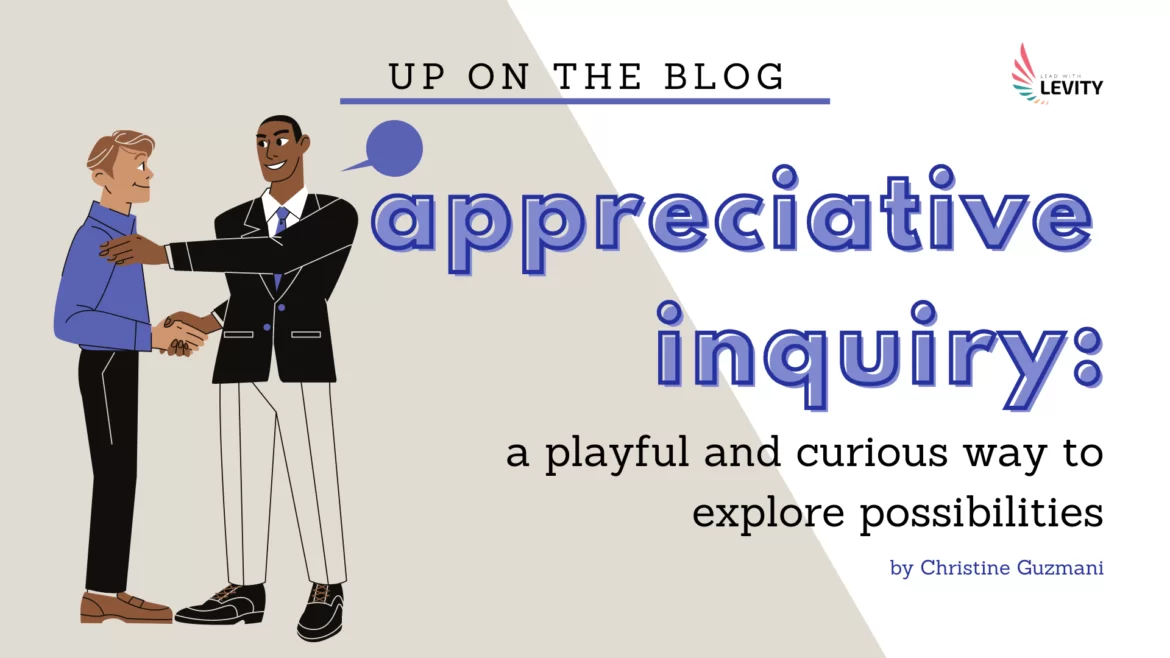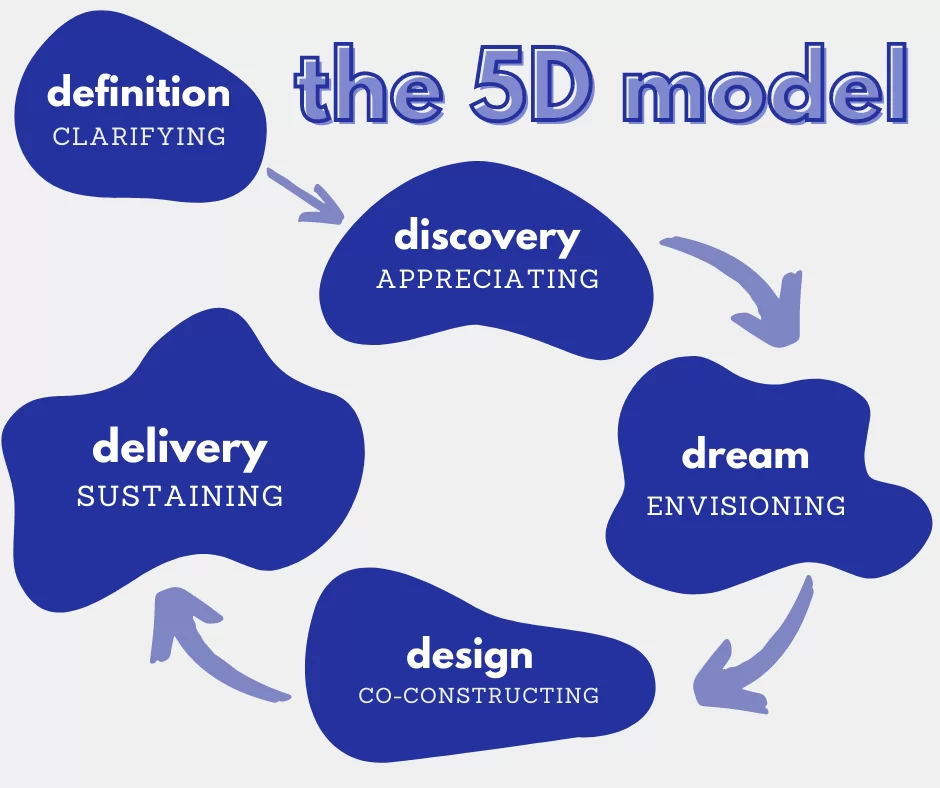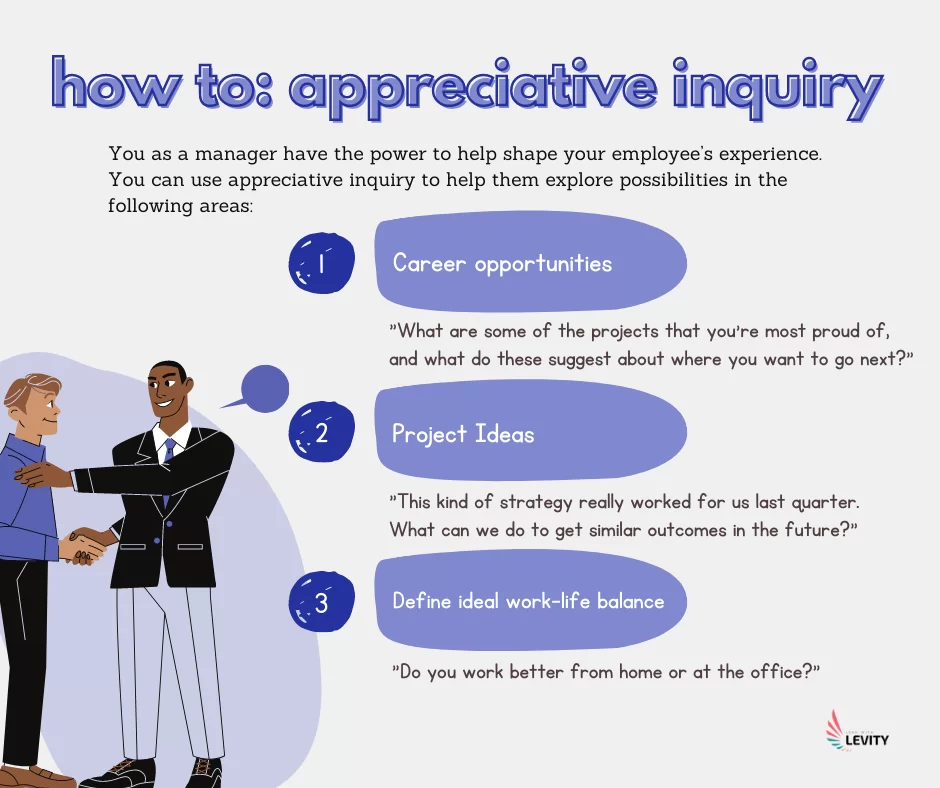
Do you find yourself feeling closer to your team when you focus on what’s right and what’s possible or when you focus on what’s wrong? Focusing on what’s not working often leads to hostility.
When it comes to problem solving, there are a lot of different ways to approach it. Some people might prefer to use a confrontational approach, while others might prefer to use a collaborative approach. In this article, we will explore the benefits of appreciative inquiry and how it can be used in the workplace to solve problems in the most productive way.
Appreciative Inquiry was pioneered by Social Entrepreneurship professor, David Cooperrider, Ph.D. He believed that social constructionism could be used to spark positive for organizational change.

Appreciative Inquiry (AI) focuses on what works, and this makes people become more enthusiastic about working towards the common goal in the company or organization, because AI enables them to deal with these goals in a positive way.
Even if we’re being positive and working on what works, we must first understand that appreciative inquiry does not equate to wearing rose-colored glasses and ignoring the problem. Appreciative Inquiry is about accepting the problems and looking at them in a different point of view.

The Model and Theory

- Definition – What is the focus of the inquiry?
We must first establish the topic of the inquiry or engagement process. The questions asked determine how the organization will approach the investigation.
- Discover – What is or has been working?
Identify what gives life to the organization. This is where we discover the organization’s current strengths.
- Dream – What more could happen?
We encourage the members to envision a great future for the organization
- Design – What should be?
Co-constructing the organization as a whole to reflect the first two aspects.
- Delivery – What will we do?
Discussing possible means of achieving a vision.
5 Components of Appreciative Inquiry (AI)
- The Constructionist Principle
Reality within an organization is subjective, formed by language and interactions between its members.
- The Simultaneity Principle
Change is already underway as questions are raised and interest grows.
- The Poetic Principle
The stories people tell one another about an organization shape and impact its personality.
- The Anticipatory Principle
Organizations and individuals strive to realize their visions of the future. A positive future image for an organization will, by extension, have a beneficial impact in the present.
- The Positive Principle
True transformation needs focusing on the positives in order to tap into the group’s collective creativity.
What do we get from Appreciative Inquiry?

As Appreciative Inquiry shifts the focus from the negatives to the positives, it brings forth a bunch of benefits not only for the managers and the organization, but all the more to the employees. It promotes a healthy working environment because the need to compare disappears. AI does not stop anyone from embracing what’s uniquely theirs.
If your organization members only remember frustrations from past experiences, Appreciative Inquiry can help them recall the many times that they’ve tried their best and all the positive outcomes they’ve gained from it. Ultimately, it gets them eager for what’s more to come in the future.
Appreciative Inquiry 101
Imagine if you were to have a conversation with your team members about their career aspirations, and you asked them questions that allowed them to explore their personal playground of possibilities. You might start off with questions like this:
Imagine that tonight you fall into a deep relaxing sleep, and you don’t wake up until 2024. When you awake, you see that a miracle has occurred. Major changes have taken place, and your role is everything you hoped it could be. You can truly say, without reservation, that this is the organization of your dreams.
- What do you see?
- What does it look like?
- What’s going on around you?
- What’s happening that’s new and different?
- What do you see in terms of where you’re at, who you’re working with, and what you’re doing?
Can you imagine how positive and empowering that kind of conversation might be for you both?

Appreciative Inquiry is a tool that can boost an employee’s engagement and well-being. It gives employees a sense of accomplishment and importance. This is just one of many ways that a manager can do to increase productivity and loyalty without the pressure of overperforming.
It only takes a slight change in your approach to reap the benefits of appreciative inquiry. If you’re interested in learning how to use powerful questions to help others explore their potential, check out Episode 68 of the Lead with Levity podcast: Find Your Playground of Possibilities.

Sources:
- Introduction to Appreciative Inquiry. The Appreciative Inquiry Commons. (2016, November 2). Retrieved February 21, 2022, from https://appreciativeinquiry.champlain.edu/learn/appreciative-inquiry-introduction/
- The benefits of appreciative inquiry. YMJen. (n.d.). Retrieved April 25, 2022, from http://www.ymjen.com/blog/posts/the-benefits-of-appreciative-inquiry
- What is appreciative inquiry? A brief history & real life examples. PositivePsychology.com. (2022, March 24). Retrieved February 21, 2022, from https://positivepsychology.com/appreciative-inquiry/
- What is appreciative inquiry? David Cooperrider. (n.d.). Retrieved February 21, 2022, from https://www.davidcooperrider.com/ai-process/
- YouTube. (2014). Playful inquiry — try this anywhere: Robyn Stratton-Berkessel at TEDxNavesink. YouTube. Retrieved March 8, 2022, from https://www.youtube.com/watch?v=9IDMOgH1Nak&ab_channel=TEDxTalks.

About the Author
Hello! I’m Christine Guzmani, a Communications and Marketing Specialist at Lead with Levity. I enjoy learning and writing about different communication strategies and all things fun at work. I am currently finishing my Bachelor’s degree in Communication.
